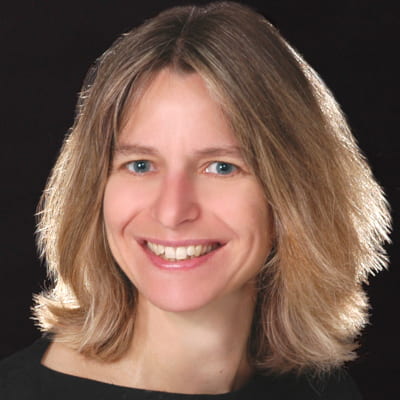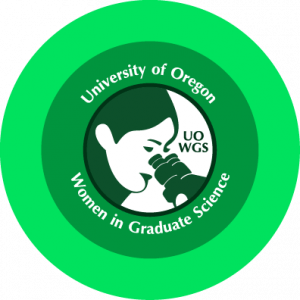Suzanne Simard
 Professor of Forest Ecology
Professor of Forest Ecology
Department of Forest and Conservation Sciences
University of British Columbia
Thursday, May 20, 2021 • 12:00-1:00pm PT
“Trees Communicate Through Networks in Complex Adaptive Systems”
Suzanne W. Simard’s research focuses on the complexity and interconnectedness of nature and is guided by her deep connection to the land and her time spent amongst the trees. She is specifically known for her work on how trees communicate and interact using below-ground fungal (mycorrhizal) networks. Simard’s work with her students led to the recognition that forests have hub trees, which are large, highly connected trees that play an important role in the flow of information and resources in a forest. Trees interact with their own and other species, including forming kin relationships with their genetic relatives. Her current research investigates how these complex relationships contribute to forest resiliency, adaptability and recovery, as well as implications for sustainable stewardship of forest ecosystems.
Simard has published over 200 peer-reviewed articles, including “Net Transfer of Carbon Between Tree Species with Shared Ectomycorrhizal Fungi” (with David A. Perry, Melanie D. Jones, David. D. Myrold, Daniel M. Durall, and Randy Molina, Nature, 1997); “Access to Mycorrhizal Networks and Roots of Trees: Importance for Seedling Survival and Resource Transfer” (with François P. Teste, Daniel M. Durall, Robert D. Guy, Melanie D. Jones, and Amanda L. Schoonmaker, Ecology, 2009); “Meta-networks of Fungi, Fauna and Flora as Agents of Complex Adaptive Systems” (with Kathy Martin, A. Vyse, and Bruce Larson, in Managing World Forests as Complex Adaptive Systems, Routledge, 2013): “Inter-plant Communication through Mycorrhizal Networks Mediates Complex Adaptive Behaviour in Plant Communities” (with Monika A. Gorzelak, Amanda K. Asay, and Brian J. Pickles, AoB Plants, 2015); “Transfer of 13C between Paired Douglas‐fir Seedlings Reveals Plant Kinship Effects and Uptake of Exudates by Ectomycorrhizas” (with Brian J. Pickles, Roland Wilhelm, Amanda K. Asay, Aria S. Hahn, and William W. Mohn, New Phytologist, 2017); “Resilience of Rhizopogon-Douglas-fir Mycorrhizal Networks 25 Years after Selective Logging” (with Carrie H. Van Dorp and Daniel M. Durall, Mycorrhiza, 2020); “Partial Retention of Legacy Trees Protect Mycorrhizal Inoculum Potential, Biodiversity, and Soil Resources While Promoting Natural Regeneration of Interior Douglas-Fir” (with W. Jean Roach, Jacob Beauregard, Julia Burkart, Dominique Cook, Danica Law, Arianna Murphy-Steed, Teah Schacter, Aidan Zickmantel, Gaelin Armstrong, Kaya M. Fraser, Lia Hart, Oliver R. J. Heath, Liam Jones, Nava S. Sachs, Hannah R. Sachs, Eva N. Snyder, Morgan Tien, and Joseph Timmermans, Frontiers in Forests and Global Change, 2021); “Beyond Seedlings: Ectomycorrhizal Fungal Networks and Growth of Mature Pseudotsuga Menziesii“ (with Joseph D. Birch, Kevin J. Beiler, and Justine Karst, Journal of Ecology, 2021); and “Harvesting Intensity and Aridity are More Important than Climate Change in Affecting Future Carbon Stocks of Douglas-fir Forests” (with Alyssa J. Robinson, Camille E. Defrenne, W. Jean Roach, Caren Dymond, and Brian J. Pickles, Frontiers in Forests and Global Change, 2022). See additional reading below.
She is an advocate for science communication and empowers people with science-based knowledge to help manage and heal forests from human impacts. Working with her colleagues, Julia Dordel and Maja Krzic, she initiated TerreWEB (Terrestrial Research on Ecosystem & World-wide Education and Broadcast), a graduate training program that focused on the importance of effectively communicating global change research, including behavioural decision making, and multimedia to inform stakeholders and the public using interactive assessment research and complex systems theory. Simard is currently the leader of The Mother Tree Project, which brings together a variety of communities, investigating and designing successful forest renewal practices to protect and support biodiversity and enhance forest regeneration. Also see the Old Growth Forest Ecology website. Simard is also the author of Finding the Mother Tree (Knopf, 2021) and has appeared in a variety of short and long-form documentaries, including Treeline (Patagonia Films, 2019), Before They Fall (Ecologyst Films, 2021), and Carbon: The Unauthorised Biography (Genepool Productions, 2022).
Additional Reading:
– Anten, Niels P. R., and Bin J. W. Chen. (2021). “Detect Thy Family: Mechanisms, Ecology and Agricultural Aspects of Kin Recognition in Plants.” Plant, Cell & Environment 44, no. 4: 1059-1071.
– Bunn, Rebecca A., Ana Corrêa, Jaya Joshi, Christina Kaiser, Ylva Lekberg, Cindy E. Prescott, Anna Sala, and Justine Karst. (2024). “What determines transfer of carbon from plants to mycorrhizal fungi?.” New Phytologist 244: 1199–1215.
– Boyno, Gökhan, and Semra Demir. (2022). “Plant-mycorrhiza Communication and Mycorrhizae in Inter-plant Communication.” Symbiosis 86, no. 2: 155-168.
– Dominguez, Pia Guadalupe, and Totte Niittylä. (2022). “Mobile Forms of Carbon in Trees: Metabolism and Transport.” Tree Physiology 42, no. 3: 458-487.
– Du, Yukai (dir.). (2016). Can Plants Talk to Each Other? – Richard Karban. TED-Ed, 2 May.
– Haswell, Elizabeth. (2024). “Plants in the Human Gaze.” Science 384, 6697: 745.
– Henriksson, Nils, John Marshall, Mona N. Högberg, Peter Högberg, Andrea Polle, Oskar Franklin, and Torgny Näsholm. (2023). “Re‐examining the Evidence for the Mother Tree Hypothesis–Resource Sharing Among Trees via Ectomycorrhizal Networks.” New Phytologist 239: 19–28.
– Hussain, Altaf, Jean C. Rodriguez-Ramos, and Nadir Erbilgin. (2019). “Spatial Characteristics of Volatile Communication in Lodgepole Pine Trees: Evidence of Kin Recognition and Intra-species Support.” Science of The Total Environment 692: 127-135.
– Irwin, Aisling (2024). “The ‘Mother Tree’ idea is everywhere — but how much of it is real?” Nature 627, no. 8005: 718-721.
– Karban, Richard. (2015). Plant Sensing and Communication. University of Chicago Press.
– Karst, Justine. (2022). “The Decay of the Wood-wide Web? A Reckoning of the Structure and Function of Common Mycorrhizal Networks in Forests.” Ecology, Evolution, and Conservation Biology (EECB) Seminar Series, Oregon State University, 18 November.
– Karst, Justine, Melanie D. Jones, and Jason D. Hoeksema. (2023). “Positive Citation Bias and Overinterpreted Results Lead to Misinformation on Common Mycorrhizal Networks in Forests.” Nature Ecology & Evolution: 1-11. [Published 13 February; republished with “Author Correction: …”, 15 March.]
– Marx, Vivien. (2024). “How’s your health, forests?” Nature Methods 21: 1145–1148.
– McMahen, Katie, Les M. Lavkulich, Susan J. Grayston, and Suzanne W. Simard. (2022). “Small-volume Additions of Forest Topsoil Improve Root Symbiont Colonization and Seedling Growth in Mine Reclamation.” Applied Soil Ecology 180: 104622.
– Perreault, Mathieu. (2023). “Les arbres s’entraident-ils par leurs racines?” La Presse, 12 November [English via GTranslate].
– Robinson, David G., Christian Ammer, Andrea Polle, Jürgen Bauhus, Roni Aloni, Peter Annighöfer, Tobias I. Baskin, Michael R. Blatt, Andreas Bolte, Harald Bugmann, Jerry D. Cohen, Peter J. Davies, Andreas Draguhn, Henrik Hartmann, Hubert Hasenauer, Peter K. Hepler, Ulrich Kohnle, Friederike Lang, Magnus Löf, Christian Messier, Sergi Munné-Bosch, Angus Murphy, Klaus J. Puettmann, Iván Quiroz Marchant, Peter H. Raven, David Robinson, Dale Sanders, Dominik Seidel, Claus Schwechheimer, Peter Spathelf, Martin Steer, Lincoln Taiz, Sven Wagner, Nils Henriksson, and Torgny Näsholm. (2024). “Mother Trees, Altruistic Fungi, and the Perils of Plant Personification.” Trends in Plant Science 29, no. 1: P20-31.
– The Rockefeller University. (2023). “Pioneering Forestry Researcher Suzanne Simard to Receive the 2023 Lewis Thomas Prize.” Rockefeller.edu, 16 March.
– Royal Botanical Gardens, Kew. (2023). “Professor Suzanne Simard Awarded Kew International Medal for ‘Invaluable Work and Devotion’ Championing Biodiversity in Forests.” Kew.org, 30 March.
– Tedersoo, Leho, Mohammad Bahram, and Martin Zobel. (2020). “How Mycorrhizal Associations Drive Plant Population and Community Biology.” Science 367, no. 6480.
#whatiscommunication2021
Introduction by Annie Gilbert, President, UO Women in Graduate Science; Graduate Student, Department of Chemistry and Biochemistry, University of Oregon
* Cosponsored by the University of Oregon Women in Graduate Science
